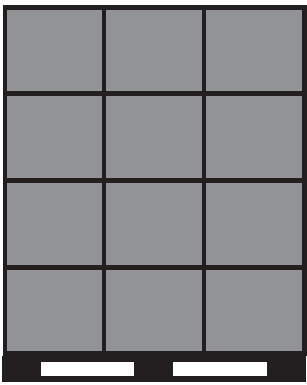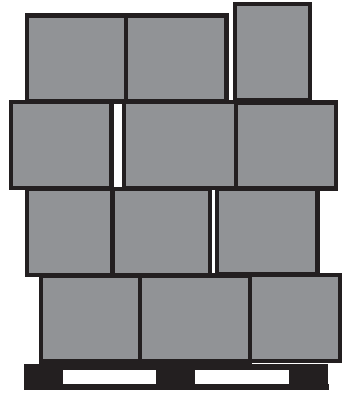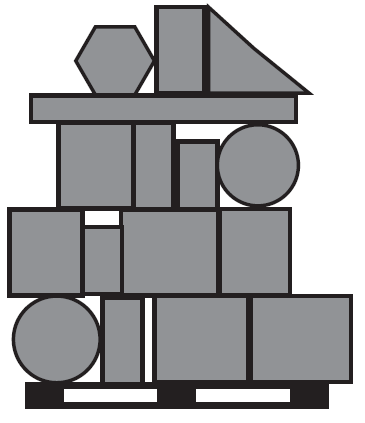Smooth, bumpy, or somewhere in between, the horizontal and vertical profile of a load is determined by the way a pallet is loaded. The loads profile in turn defines the load as an A, B, or C type load. The importance of establishing the load profile as A, B, or C helps in determining the type of film, wrap pattern, and in some cases the style of wrapper that is best suited for the job.
A-Loads

Type A loads are the easiest to wrap, and the most common load type. The A-load consists of uniform boxes with the exact same weight and dimensions. The load profile is nearly identical to the pallet deck with no protruding edges. This reduces the possibility of punctures and increases the load stability before, during and after the load is wrapped.
B-Loads

Type B loads have less uniform vertical and horizontal edge profiles than Type A loads. While they are likely all boxes, the load pattern is irregular and may not match the size of the pallet deck. Often there are random edges that can puncture stretch film. These loads may require different film or additional wraps of film to provide load stabilization.
C-Loads

Type C loads are the most random and unstable of the load types, and when wrapping these loads there is the highest chance of the film puncturing or tearing. These loads are typically a mix of different size boxes and irregular shaped items – so no two will have the same horizontal or vertical edge profiles. Loads that are extra light, very heavy or have poor weight distribution can also be considered C type loads. Because these loads are prone to being unstable special consideration is often given to the film type and application, as well as the type of equipment used. For example, minimizing vibration by using a drag chain conveyor instead of a roller conveyor, or wrapping the load directly on the floor with a rotary arm wrapper can reduce the chance of the load toppling when being conveyed or wrapped. That makes these types of equipment choices popular when handling C loads.
Determining load type is just one piece of the puzzle when selecting appropriate stretch wrapping equipment. For assistance in determining your load type, or in selecting a wrapper that is best suited to your needs contact Orion Packaging.
